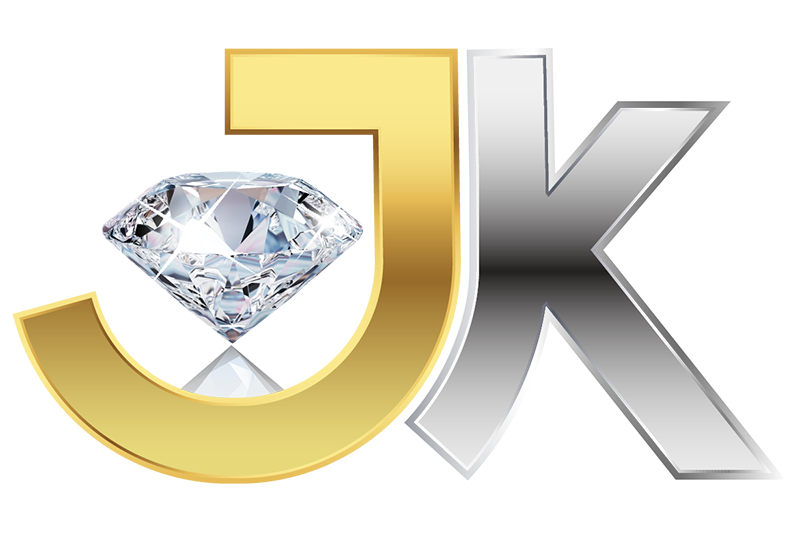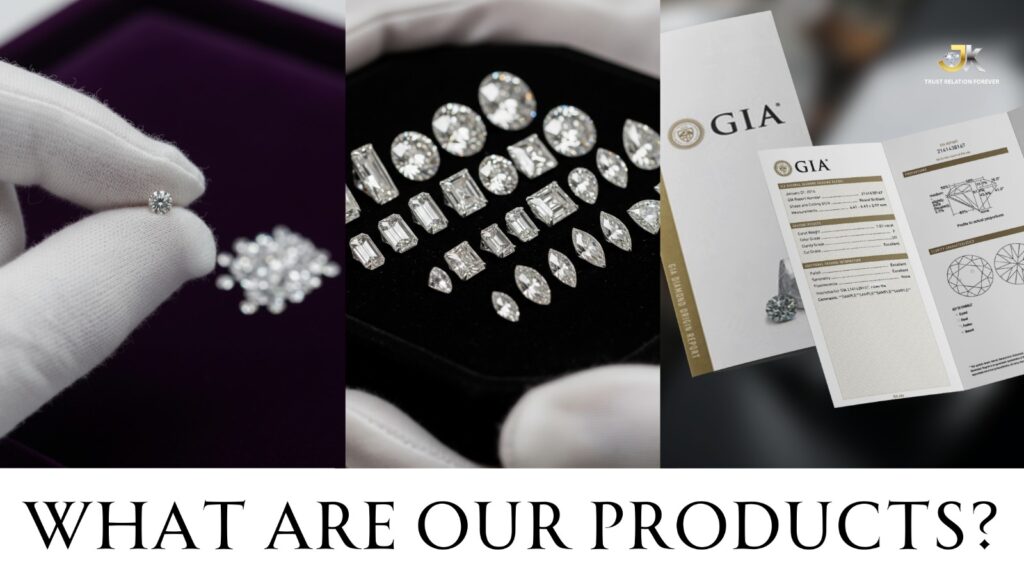You’re delving into some crucial aspects of the diamond industry! Let’s break down “star melee,” “polished diamonds,” and “dossiers” in detail.
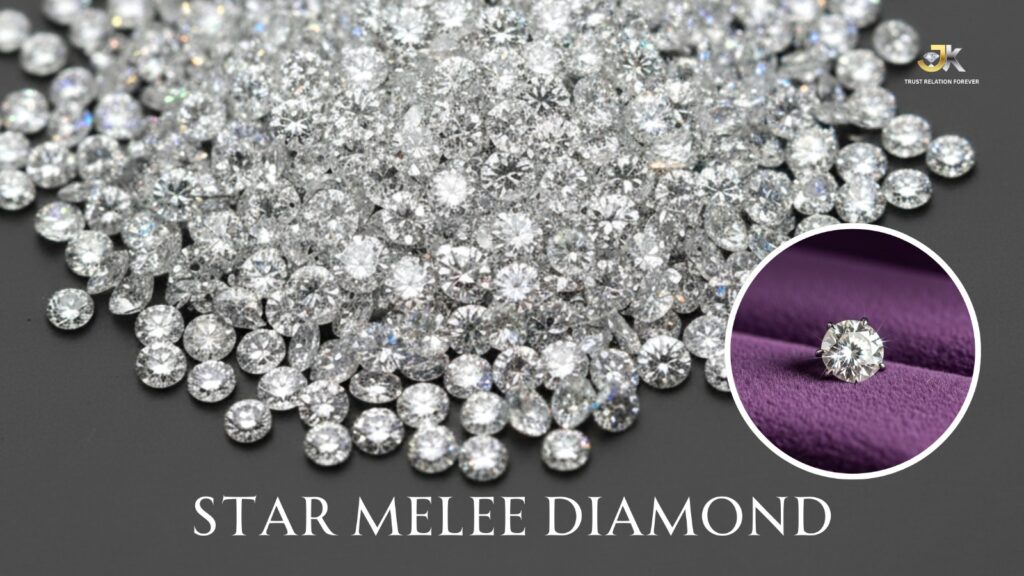
Star Melee
“Star melee” is a term used in the diamond trade to describe a very specific type of small diamond.
What it is:
- Size: Star melee diamonds are incredibly small, typically weighing less than 0.02 carats. Some definitions place them in the range of 0.009 to 0.021 carats. They are essentially at the smallest end of what is considered a “diamond” in jewelry.
- Cut: The defining characteristic of a star melee diamond is its cut. When viewed face-up, they exhibit a distinctive pattern of six pointed stars visible on their surface. This star pattern is the result of a specific cutting and polishing technique that creates a series of triangular facets around the perimeter of the stone.
- Purpose: Due to their diminutive size, star melee diamonds are rarely centerpieces. Instead, they are primarily used as accent stones in jewelry settings. They are crucial for adding sparkle and visual interest to a larger design, without drawing too much attention away from a main stone.
Where they are used:
- Halo settings: Where small diamonds are set around a larger center stone to create an illusion of greater size and enhance brilliance.
- Pavé settings: Where numerous small diamonds are set closely together, giving the impression of a continuous, glittering surface.
- Micro-pavé settings: Similar to pavé, but with even smaller diamonds set incredibly tightly.
- Accent stones: In various designs, lining bands, creating intricate patterns, or highlighting specific features.
- “Diamond dust” applications: In some cases, for very subtle sparkle or in less expensive jewelry items, though “star melee” implies a more specific, recognized cut.
Why they are important:
- Visual impact: They contribute significantly to the overall brilliance, fire, and scintillation of a piece of jewelry.
- Cost-effectiveness: Using many small diamonds can be a more affordable way to achieve a diamond-studded look compared to using a single large diamond of equivalent total carat weight.
- Design versatility: They allow for intricate and detailed designs that wouldn’t be possible with larger stones.
- Identification: The star pattern can be a characteristic used to identify natural diamonds, as some synthetic or imitation diamonds may not exhibit the same precise cut.
Distinction from “Melee Diamonds”: While “star melee” refers to a specific cut within the very small diamond category, the broader term “melee diamonds” refers to any small diamonds, generally weighing less than 0.2 carats. Melee diamonds can be “full cut” (with 57-58 facets, like a miniature round brilliant) or “single cut” (with 17 facets, common in antique jewelry). Star melee falls under the umbrella of melee, but with its unique star-shaped facet pattern.
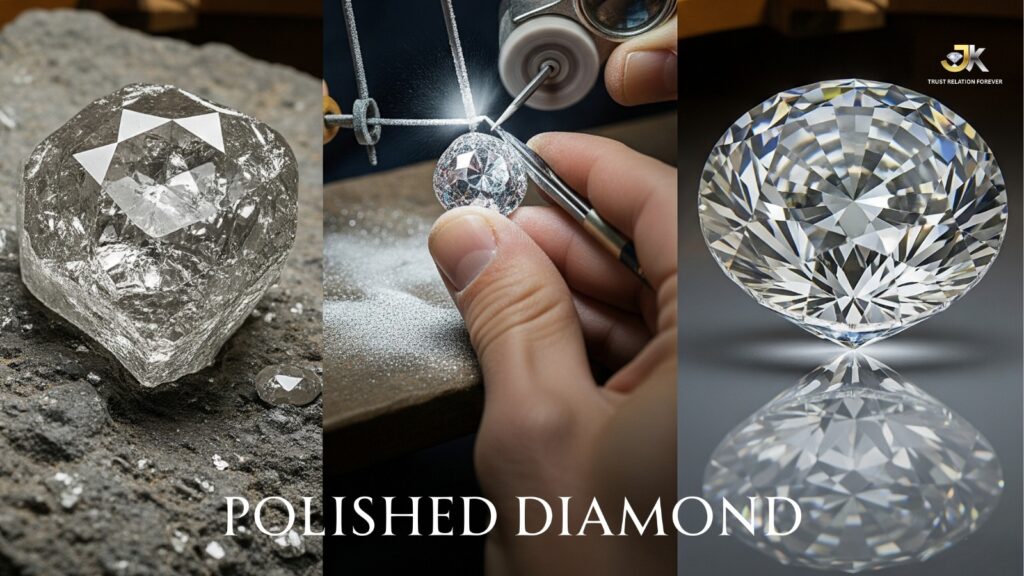
Polished Diamonds
A “polished diamond” is a diamond that has undergone the complete transformation from its rough, natural state to a finished, brilliant gemstone ready for use in jewelry or industrial applications.
What it is:
- Transformation from Rough: Diamonds, when extracted from the earth, are called “rough diamonds.” They often look like dull, oily pieces of glass and bear little resemblance to the sparkling gems we recognize.
- Cutting and Polishing Process: Polished diamonds are the result of a meticulous and highly skilled multi-stage process that includes:
- Planning: Expert diamond cutters use advanced technology and their knowledge to analyze the rough stone, identifying its internal characteristics (inclusions) and external features (blemishes). They then plan the optimal cut to maximize the diamond’s beauty, brilliance, and often, its carat weight. This involves deciding on the shape, proportion, and number of facets.
- Cleaving/Sawing/Laser Cutting: The rough diamond may be split (cleaved), sawn, or laser-cut into smaller, more manageable pieces, or to remove significant flaws.
- Bruting/Girdling: The diamond is rounded into its basic shape (for round brilliants) or given a basic outline for fancy shapes. This creates the “girdle” of the diamond.
- Faceting and Polishing: This is the most crucial stage where individual facets are ground and polished onto the diamond’s surface using diamond dust or specialized polishing wheels. This process requires immense precision and expertise to ensure perfect angles and symmetry, which directly impact how the diamond interacts with light.
- Final Cleaning: The polished diamond is thoroughly cleaned to remove any residue from the cutting process.
Key Characteristics and Grades:
- Once polished, a diamond’s quality is assessed based on the 4 Cs:
- Carat Weight: The diamond’s weight.
- Color: The absence of color (for white diamonds, ranging from D-Z).
- Clarity: The absence of internal inclusions and external blemishes (ranging from Flawless to Included).
- Cut: This is perhaps the most important “C” for polished diamonds, especially for round brilliants, as it dictates how well the diamond reflects and refracts light. It assesses proportions, symmetry, and polish.
Purpose:
- Gemstone Use: The primary purpose of polished diamonds, particularly high-quality ones, is for use as gemstones in jewelry. The cutting and polishing process is designed to unlock the diamond’s inherent fire, brilliance, and scintillation, making it visually captivating.
- Industrial Use: Even industrial diamonds undergo a degree of processing and polishing, though not to the same aesthetic standards as gemstones. Their facets may be designed for optimal abrasive or cutting performance rather than light reflection.
Global Hubs:
- India, particularly Surat, is the world’s largest diamond polishing center, responsible for a significant majority of the world’s polished diamonds.
- Other important polishing centers include China, Israel (known for special cuts), and Belgium.
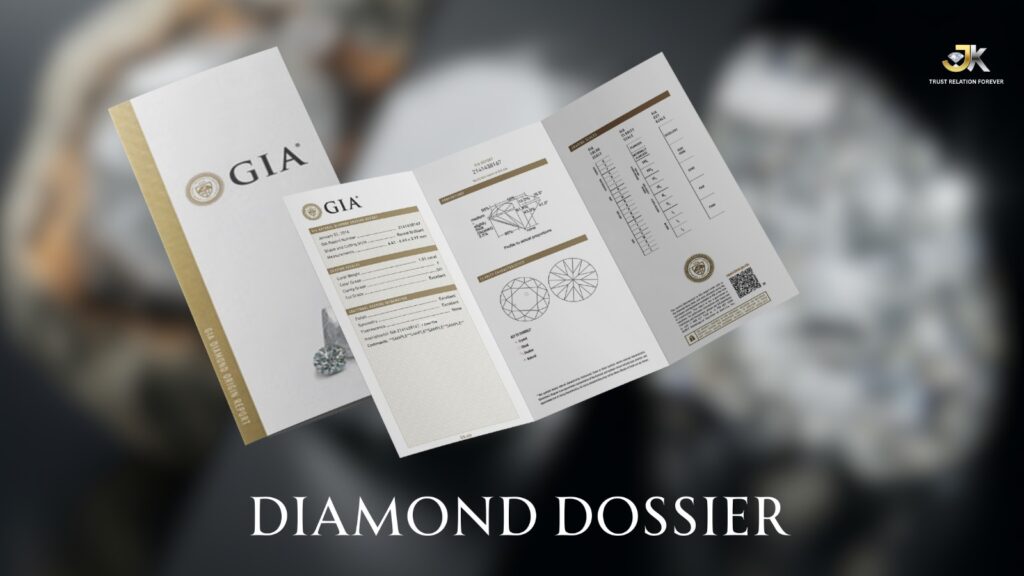
Dossiers (Diamond Dossiers/Grading Reports)
A “dossier,” in the context of diamonds, refers to a Diamond Grading Report or Diamond Dossier issued by a reputable gemological laboratory. These reports provide an independent and objective assessment of a diamond’s quality characteristics.
What it is:
- Independent Assessment: A diamond dossier is a concise document provided by a gemological institute (like GIA – Gemological Institute of America, IGI – International Gemological Institute, or AGS – American Gem Society) after they have scientifically examined and graded a loose diamond.
- Key Information: It provides a detailed breakdown of the diamond’s 4 Cs (carat weight, color, clarity, and cut) along with other important attributes like:
- Measurements: The precise dimensions of the diamond.
- Proportions: The relationships between the diamond’s various parts.
- Polish: The smoothness of the diamond’s surface.
- Symmetry: The exactness of the diamond’s facet alignment.
- Fluorescence: The diamond’s reaction to ultraviolet light.
- Inscriptions: Any laser inscriptions on the diamond’s girdle (often the report number).
- Clarity Characteristics: A list of the most significant inclusions and blemishes that contributed to the clarity grade. (Note: A full grading report usually includes a plotted diagram showing the exact location of these characteristics, whereas a “dossier” might omit this for smaller stones).
- Origin (sometimes): Some reports, like GIA’s Diamond Origin Report, can also confirm the geographical origin of the diamond.
Purpose and Importance:
- Authentication and Trust: The primary purpose of a diamond dossier is to provide a reliable, independent, and trusted verification of a diamond’s quality. This is crucial in an industry where assessing a diamond’s value can be complex.
- Informed Purchase Decisions: For consumers, a dossier allows them to understand precisely what they are buying and compare different diamonds based on objective criteria, rather than relying solely on a salesperson’s claims.
- Value Determination: The grades and characteristics detailed in the dossier directly impact the diamond’s value and price.
- Identification: The unique report number (often laser-inscribed on the diamond’s girdle) helps in positively identifying a specific diamond and matching it to its report.
- Industry Standard: Reputable jewelers and dealers rely on these reports as an industry standard for trading and selling diamonds.
Types of Dossiers/Reports:
- Full Grading Report: Comprehensive reports, typically for larger diamonds, which include a detailed plotted diagram showing the location of inclusions and blemishes.
- Diamond Dossier (GIA specific): A more compact report, often issued for diamonds weighing less than 1 or 2 carats, that includes all the essential grading information but typically without the detailed plotted diagram. This makes them more cost-effective for smaller stones.
- Lab-Grown Diamond Reports: With the rise of lab-grown diamonds, grading labs now issue specific reports for these stones, noting their origin as “Laboratory-Grown.”
How it works:
- When a diamond dealer or jeweler wants to sell a certified diamond, they send the loose (unset) diamond to a gemological laboratory.
- The laboratory’s trained gemologists examine the diamond using standardized procedures and equipment, often under 10x magnification.
- They assign grades for the 4 Cs and other characteristics.
- A physical or digital report (dossier) is then generated and provided back with the diamond.
In summary, “star melee” are tiny, specifically cut diamonds used for accenting jewelry, “polished diamonds” are the finished, cut, and gleaming gems ready for use, and “dossiers” are the essential reports that provide detailed, independent verification of a diamond’s quality and characteristics, instilling confidence, and transparency in the diamond market.
Stay updated on the latest JK Sons postings by following us on Instagram.
https://www.instagram.com/j_ksons/
https://x.com/jksonsdiamond?t=a4_K1Uej1BwNCXt63jmEMw&s=08
https://www.youtube.com/@JKSons-q4x
https://www.facebook.com/share/19fYjZtEZf/
https://www.linkedin.com/in/jk-sons-a8005832b?utm_source=share&utm_campaign=share_via&utm_content=profile&utm_medium=android_app

